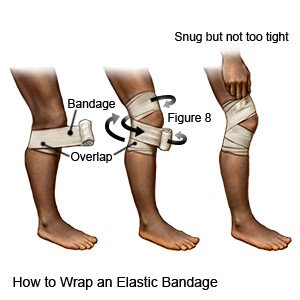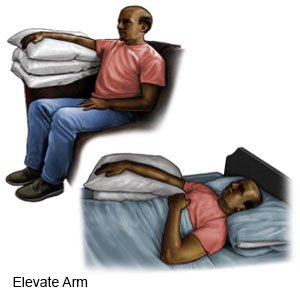Musculoskeletal Pain
Medically reviewed by Drugs.com. Last updated on Aug 4, 2025.
What do I need to know about musculoskeletal pain?
Musculoskeletal pain can occur in muscles, bones, joints, ligaments, tendons, or nerves. The pain can be dull, achy, or sharp. You may have pain and tenderness to the touch as well. The pain can occur anywhere in your body. Musculoskeletal pain can be from an injury, surgery, or a medical condition such as polymyositis.
How is the cause of musculoskeletal pain diagnosed?
Your healthcare provider will ask about past medical conditions or injuries. Your provider may touch, press, bend, stretch, or move the painful area. Tell your provider when the pain started and if the pain is constant or comes and goes. Tell your provider if the pain is dull, sharp, or achy. Also tell your provider if the pain wakes you from sleep. You may also need any of the following tests:
- X-ray, MRI, or CT scan pictures may show an injury or health condition that is causing your pain. Contrast liquid may be given to help the area show up better in the pictures. Tell the healthcare provider if you have ever had an allergic reaction to contrast liquid. Do not enter the MRI room with anything metal. Metal can cause serious injury. Tell the provider if you have any metal in or on your body.
- Ultrasound pictures may show problems in your muscles or tissues that are causing your pain.
How is musculoskeletal pain treated?
- NSAIDs help decrease swelling and pain or fever. This medicine is available with or without a doctor's order. NSAIDs can cause stomach bleeding or kidney problems in certain people. If you take blood thinner medicine, always ask your healthcare provider if NSAIDs are safe for you. Always read the medicine label and follow directions.
- Acetaminophen decreases pain and fever. It is available without a doctor's order. Ask how much to take and how often to take it. Follow directions. Read the labels of all other medicines you are using to see if they also contain acetaminophen, or ask your doctor or pharmacist. Acetaminophen can cause liver damage if not taken correctly.
- Muscle relaxers help relax your muscles to decrease pain and muscle spasms.
- Steroids may be given to decrease redness, pain, and swelling.
- A pain cream, gel, or patch may be applied to your skin on painful areas.
Treatment options
The following list of medications are related to or used in the treatment of this condition.
Related medications
What can I do to manage my symptoms?
- Rest as directed. Avoid activity that causes pain. You may be able to return to normal activity when you can move without pain. Follow directions for rest and activity.
- Ice the painful area to decrease pain and swelling. Use an ice pack, or put ice in a plastic bag and cover it with a towel. Always put a cloth between the ice and your skin. Apply the ice as often as directed for the first 24 to 48 hours.
- Apply heat to the area as directed. Heat helps decrease pain and muscle spasms. Your healthcare provider will tell you when and how often to apply heat.
- Apply compression to the area, if directed. Your provider may want you to use a splint, brace, or elastic bandage. Compression helps decrease pain and swelling. A splint, brace, or bandage will also help protect the painful area when you move around.

- Elevate (raise) the painful area to reduce swelling and pain. Use pillows, blankets, or rolled towels to elevate the area above the level of your heart. Elevate the area as often as you can.


- Ask your provider if alternative therapies are right for you. Examples include acupuncture, relaxation, and massage. These therapies may help reduce pain.
When should I seek immediate care?
- You have severe pain when you move the area.
- You lose feeling in the area.
- You have new or worse pain or swelling in the area. Your skin may feel tight.
When should I call my doctor?
- You have a fever.
- You have pain that does not get better with treatment.
- You have trouble sleeping because of your pain.
- Your painful area becomes more tender, red, and warm to the touch.
- You have less movement of the painful area.
- You have questions or concerns about your condition or care.
Care Agreement
You have the right to help plan your care. Learn about your health condition and how it may be treated. Discuss treatment options with your healthcare providers to decide what care you want to receive. You always have the right to refuse treatment. The above information is an educational aid only. It is not intended as medical advice for individual conditions or treatments. Talk to your doctor, nurse or pharmacist before following any medical regimen to see if it is safe and effective for you.© Copyright Merative 2025 Information is for End User's use only and may not be sold, redistributed or otherwise used for commercial purposes.
Learn more about Musculoskeletal Pain
Treatment options
Care guides
- Acetaminophen and Ibuprofen Dosing in Children
- Back Pain
- Fibromyalgia
- Hip Pain
- Shoulder Pain
- Viral Syndrome in Children
Medicine.com guides (external)
Further information
Always consult your healthcare provider to ensure the information displayed on this page applies to your personal circumstances.
